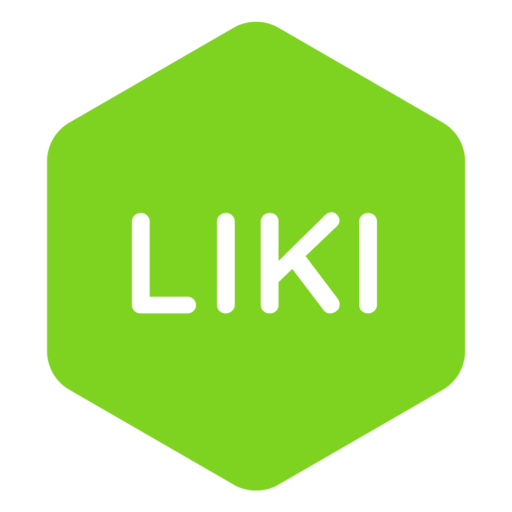Technologie
Tworzenie oprogramowania w Go – rozwiązania backendowe


Czym jest programowanie w Go?
Go, znane również jako Golang, to język programowania opracowany przez Google. Został zaprojektowany, aby rozwiązać typowe problemy, z jakimi borykają się programiści przy użyciu innych języków programowania, takich jak C++ i Java, w tym wolne czasy kompilacji oraz skomplikowaną składnię. Go jest językiem statycznie typowanym, co oznacza, że typy zmiennych są określane w czasie kompilacji, a nie podczas wykonywania programu.
Język Go zyskał popularność w tworzeniu systemów backendowych, aplikacji internetowych oraz programowaniu sieciowym.
Co jeszcze?
Go jest znane ze swojej prostoty, czytelności i wydajności, a także z wbudowanych funkcji obsługi współbieżności i mechanizmu garbage collection. Go posiada również rozwijający się ekosystem bibliotek i narzędzi, co czyni go wszechstronnym językiem, odpowiednim do różnych potrzeb programistycznych.
Programowanie w Go polega na wykorzystaniu tego języka do tworzenia aplikacji programistycznych. Programiści korzystają z Go do pisania kodu, tworzenia funkcji oraz używania wbudowanych bibliotek i narzędzi w celu tworzenia wydajnego i niezawodnego oprogramowania. Tworzenie w Go obejmuje budowanie serwerów internetowych, narzędzi wiersza poleceń, programowanie sieciowe i inne aplikacje. Go może być używane zarówno w małych, jak i dużych projektach, a korzystają z niego takie firmy jak Google, Dropbox czy Uber.

Krótka historia rozwoju Go
Rozwój Go rozpoczął się w 2007 roku, kiedy Robert Griesemer, Rob Pike i Ken Thompson z Google zaczęli pracę nad nowym językiem programowania. Ich celem było stworzenie języka łączącego prostotę i produktywność języków dynamicznych, takich jak Python, z wydajnością i bezpieczeństwem języków kompilowanych, takich jak C++. Chcieli także stworzyć język dobrze przystosowany do nowoczesnych środowisk obliczeniowych, takich jak procesory wielordzeniowe i systemy rozproszone.
Pierwsze publiczne wydanie Go miało miejsce w listopadzie 2009 roku i szybko zyskało popularność wśród programistów dzięki swojej prostocie, wydajności i wbudowanym funkcjom współbieżności. W 2012 roku wydano Go 1.0, co oznaczało pierwsze stabilne wydanie języka.
Od tego czasu Go zyskało na popularności i zostało przyjęte przez takie firmy jak Google, Dropbox, Uber i wiele innych. W 2016 roku Go zajęło dziewiąte miejsce w rankingu TIOBE Index, a w kolejnych latach utrzymywało wysoką pozycję w różnych zestawieniach popularności języków programowania.
Społeczność programistów Go również rosła na przestrzeni lat, tworząc liczne biblioteki, frameworki i narzędzia wspierające rozwój w Go. Obecnie Go jest szeroko wykorzystywane do budowy między innymi systemów backendowych, aplikacji internetowych, programowania sieciowego i usług w chmurze.
Gdzie znajduje zastosowanie programowanie w Go?
Programowanie w Go znajduje zastosowanie w różnych aplikacjach i projektach, w tym:
- Systemy backendowe. Go jest popularnym wyborem do tworzenia systemów backendowych dla aplikacji internetowych, API i innych systemów rozproszonych. Jego wbudowane funkcje współbieżności oraz efektywne zarządzanie pamięcią sprawiają, że doskonale nadaje się do obsługi dużych wolumenów żądań.
- Sieci komputerowe. Biblioteki sieciowe Go oraz wsparcie dla współbieżności czynią ten język dobrym wyborem do tworzenia aplikacji i narzędzi sieciowych, takich jak load balancery, serwery proxy czy skanery sieciowe.
- Narzędzia wiersza poleceń. Obsługa kompilacji międzyplatformowej i statycznego linkowania w Go ułatwia tworzenie narzędzi wiersza poleceń, które można uruchamiać na różnych platformach.
- Narzędzia DevOps. Go jest wykorzystywane do budowy różnych narzędzi DevOps, takich jak Docker, Kubernetes czy Terraform.
- Usługi w chmurze. Efektywne zarządzanie pamięcią i funkcje współbieżności w Go sprawiają, że język ten doskonale nadaje się do tworzenia usług w chmurze i mikrousług.
- Data science i uczenie maszynowe. Go jest coraz częściej wykorzystywane w projektach z zakresu data science i uczenia maszynowego dzięki swojej wydajności i wsparciu dla przetwarzania równoległego.
Podsumowując, Go to wszechstronny język, który można wykorzystać w różnych kontekstach programistycznych, od małych projektów po duże, rozproszone systemy.
Dlaczego warto wybrać programowanie w Go?
01
Prostota
02
Wydajność
03
Skalowalność
04
Bezpieczeństwo
05
Open source
06
Wsparcie międzyplatformowe
Istnieje wiele powodów, dla których warto wybrać programowanie w Go:
Prostota. Go został zaprojektowany jako prosty język o minimalistycznej składni, co sprawia, że jest łatwy do nauki i użycia. Prostota języka ułatwia również pisanie, utrzymanie i debugowanie kodu.
Wydajność. Go to język kompilowany, który generuje binaria o wysokiej wydajności i niskim zużyciu pamięci. Wbudowane funkcje współbieżności sprawiają, że świetnie nadaje się do obsługi dużych wolumenów żądań w systemach rozproszonych.
Skalowalność. Natywne funkcje współbieżności i efektywne zarządzanie pamięcią w Go umożliwiają budowanie skalowalnych systemów, które mogą obsługiwać dużą liczbę użytkowników lub żądań.
Bezpieczeństwo. Go oferuje wbudowane funkcje bezpieczeństwa, takie jak garbage collection, sprawdzanie granic tablic oraz silne typowanie, które pomagają zapobiegać typowym błędom programistycznym i zwiększają niezawodność kodu.
Open source. Go jest językiem open source, co oznacza, że każdy może z niego korzystać i przyczyniać się do jego rozwoju. Dzięki temu powstała dynamiczna społeczność programistów, bibliotek i narzędzi wokół tego języka.
Wsparcie międzyplatformowe. Go można kompilować do działania na wielu platformach, takich jak Linux, macOS, Windows i inne. To sprawia, że łatwo jest pisać i dystrybuować kod działający na szerokiej gamie systemów.
Jak widać, Go to wszechstronny język, który oferuje prostotę, wydajność, skalowalność, bezpieczeństwo oraz wsparcie międzyplatformowe, czyniąc go świetnym wyborem do realizacji różnorodnych potrzeb programistycznych.
Proces programowania w Go
Proces tworzenia aplikacji w Go zazwyczaj obejmuje następujące kroki:
- Instalacja. Pierwszym krokiem w pracy z Go jest zainstalowanie języka programowania Go na swoim komputerze. Kompilator Go można pobrać z oficjalnej strony internetowej i postępować zgodnie z instrukcjami instalacji.
- Konfiguracja środowiska. Po zainstalowaniu Go należy skonfigurować środowisko programistyczne. Obejmuje to ustawienie zmiennej środowiskowej „GOPATH”, która określa katalog, w którym przechowywane są źródła i pakiety Go.
- Tworzenie nowego projektu. Aby rozpocząć nowy projekt w Go, należy utworzyć nowy katalog w ramach „GOPATH” i dodać plik „main.go”. Ten plik będzie zawierał punkt wejścia dla aplikacji.
- Pisanie kodu. Po skonfigurowaniu projektu można rozpocząć pisanie kodu w Go. Kod w Go jest zwykle organizowany w pakiety, które zawierają powiązane funkcje i typy. Nowe pakiety można tworzyć za pomocą słowa kluczowego „package” w kodzie.
- Budowanie i testowanie. Po napisaniu kodu można zbudować program Go za pomocą polecenia „go build”. To polecenie tworzy plik wykonywalny, który można uruchomić. Kod można także testować za pomocą polecenia „go test”, które uruchamia napisane testy jednostkowe.
- Debugowanie. W przypadku napotkania błędów lub problemów w kodzie można skorzystać z wbudowanych narzędzi debugowania Go, takich jak polecenie „go run” z flagą „-race” do wykrywania warunków wyścigu lub „go vet” do identyfikacji typowych błędów.
- Wdrożenie. Gdy kod jest gotowy, aplikację Go można wdrożyć na serwerze lub platformie chmurowej. Obsługa wielu platform oraz efektywne zarządzanie pamięcią sprawiają, że Go doskonale nadaje się do wdrożeń w systemach rozproszonych.
Podsumowując, proces programowania w Go obejmuje konfigurację środowiska, pisanie kodu, budowanie i testowanie, debugowanie oraz wdrażanie aplikacji. Prostota, wydajność i wbudowane narzędzia Go czynią ten język elastycznym i łatwym w użyciu do tworzenia różnorodnych aplikacji.

Zainteresowany usługami sieciowymi napisanymi w Go?
Chętnie dopasujemy najlepsze rozwiązanie do Twoich potrzeb.
Jakie narzędzia są potrzebne w programowaniu w Go?
Istnieje kilka narzędzi powszechnie używanych w programowaniu w Go:
- Kompilator Go. Kompilator Go to narzędzie, które tłumaczy kod źródłowy Go na pliki binarne możliwe do wykonania, które mogą być uruchamiane na różnych platformach.
- Zintegrowane środowiska programistyczne (IDE). IDE, takie jak „Visual Studio Code”, „GoLand” czy „IntelliJ IDEA”, oferują funkcje edycji kodu, debugowania i testowania specjalnie zaprojektowane dla programowania w Go.
- Edytory tekstu. Edytory tekstu, takie jak „Atom”, „Sublime Text” czy „Vim”, mogą być również używane do programowania w Go, często z pomocą wtyczek i rozszerzeń.
- Pakiety i biblioteki Go. Go posiada dużą bibliotekę standardową, która obejmuje pakiety do typowych zadań, takich jak operacje wejścia/wyjścia na plikach, sieciowanie czy kryptografia. Istnieje również wiele zewnętrznych pakietów i bibliotek dostępnych na stronach takich jak GitHub, które mogą rozszerzyć funkcjonalność Go.
- Narzędzia Go. Narzędzia wiersza poleceń Go, takie jak „go build”, „go test”, „go get”, „go vet” i „go fmt”, oferują szereg użytecznych funkcji dla programowania w Go, takich jak kompilowanie, testowanie, formatowanie i analiza kodu.
- Systemy kontroli wersji (VCS). Systemy takie jak „Git” czy „Mercurial” są niezbędne do zarządzania zmianami w kodzie, współpracy z innymi programistami oraz wdrażania zmian kodu w środowiskach produkcyjnych.
- Narzędzia do ciągłej integracji i wdrażania (CI/CD). Narzędzia CI/CD, takie jak „Jenkins”, „Travis CI” czy „CircleCI”, mogą być używane do automatyzacji procesu budowania, testowania i wdrażania aplikacji Go.
Podsumowując, te narzędzia są kluczowe dla programowania w Go i mogą usprawnić proces tworzenia oprogramowania, poprawić jakość kodu oraz zwiększyć wydajność i niezawodność aplikacji napisanych w Go.
Usługi programowania w Go
Usługi programowania w Go mogą przynieść firmom i organizacjom szereg korzyści, w tym dostęp do doświadczonych programistów, szybszy rozwój aplikacji, poprawę jakości kodu oraz możliwość tworzenia wydajnych i skalowalnych aplikacji. Zakres usług może obejmować:
- Tworzenie oprogramowania na zamówienie. Firmy zajmujące się programowaniem w Go mogą oferować usługi tworzenia niestandardowego oprogramowania, tworząc aplikacje dostosowane do specyficznych potrzeb biznesowych.
- Tworzenie aplikacji webowych. Go jest popularnym wyborem do tworzenia aplikacji internetowych, a firmy oferujące usługi programowania w Go mogą tworzyć aplikacje internetowe dla różnych branż i zastosowań.
- Tworzenie aplikacji chmurowych. Go doskonale sprawdza się w rozwoju aplikacji chmurowych, a firmy programistyczne mogą świadczyć usługi tworzenia aplikacji natywnych dla chmury, które można wdrażać na platformach takich jak AWS, Google Cloud czy Azure.
- Usługi DevOps. Firmy oferujące programowanie w Go mogą świadczyć usługi DevOps, pomagając klientom w automatyzacji procesu tworzenia i wdrażania aplikacji w Go, w tym w testowaniu, wdrażaniu oraz ciągłej integracji i wdrażaniu (CI/CD).
- Konsultacje i szkolenia. Firmy zajmujące się programowaniem w Go mogą oferować usługi doradcze i szkoleniowe, pomagając klientom ocenić przydatność Go do ich specyficznych potrzeb oraz organizować szkolenia dla programistów, aby nauczyć ich tworzenia aplikacji w Go.
- Utrzymanie i wsparcie. Firmy programistyczne mogą zapewnić ciągłe wsparcie i utrzymanie aplikacji, aby zapewnić ich aktualność i pełną funkcjonalność przez cały czas.
Przykłady projektów w Go
Istnieje wiele znanych projektów rozwijanych z wykorzystaniem Go. Oto kilka przykładów:
- Docker. Docker to popularna platforma konteneryzacji, która umożliwia programistom pakowanie i wdrażanie aplikacji w przenośny i skalowalny sposób. Backend Dockera jest napisany w Go.
- Kubernetes. Kubernetes to platforma orkiestracji kontenerów, która pozwala programistom zarządzać i wdrażać aplikacje konteneryzowane. Kubernetes również jest napisany w Go.
- InfluxDB. InfluxDB to popularna baza danych szeregów czasowych, zaprojektowana do przechowywania i analizowania dużych ilości danych oznaczonych znacznikami czasu. InfluxDB jest napisana w Go.
- CockroachDB. CockroachDB to rozproszona baza danych SQL, zaprojektowana do skalowalnych, odpornych na awarie i spójnych operacji bazodanowych. CockroachDB jest napisana w Go.
- Ethereum. Ethereum to platforma blockchain, która umożliwia programistom tworzenie zdecentralizowanych aplikacji (dApps). Klient Ethereum jest napisany w Go.
- Prometheus. Prometheus to otwarte oprogramowanie monitorujące, używane do zbierania i analizowania metryk z różnych źródeł. Prometheus jest napisany w Go.
- Hugo. Hugo to popularny generator statycznych stron internetowych, który umożliwia szybkie i łatwe tworzenie stron statycznych. Hugo jest napisany w Go.
Te projekty pokazują wszechstronność i moc Go w tworzeniu różnorodnych aplikacji, od konteneryzacji i platform chmurowych po bazy danych i systemy monitorowania.

Przemek
COO

Kasia
Digital Value Manager

Piotr
Business Representative

